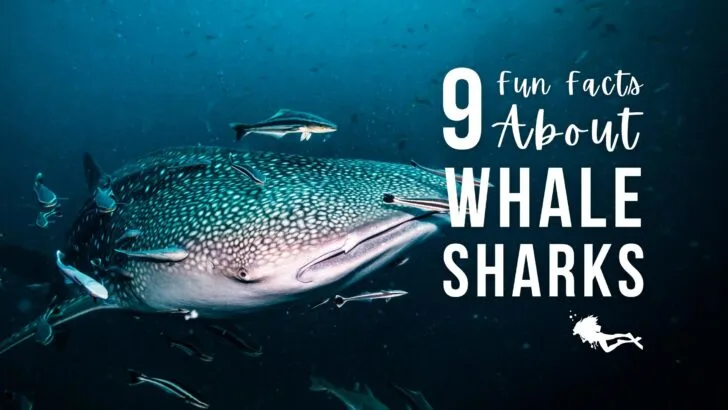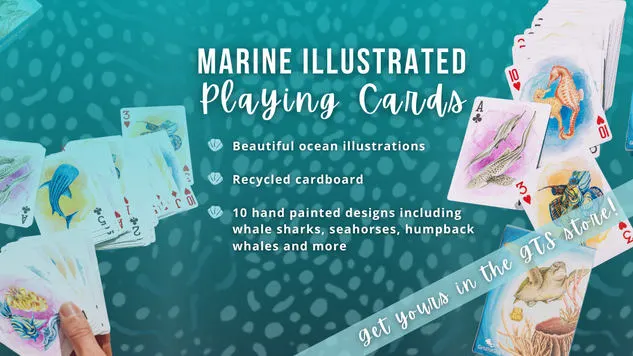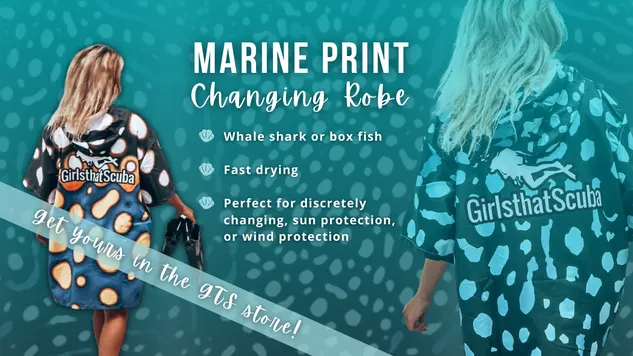Keen to learn some fun facts about whale sharks? We don’t blame you! Their incredible size and patterned exterior make whale sharks mesmerising to behold in the water. What’s more, these gentle giants pose zero threat to humans.
This makes whale sharks a firm favourite among scuba divers around the world. Yet we still have lots to learn about these mysterious creatures.
In our list of whale shark interesting facts we explore what is currently known about whale sharks, including their anatomy, behaviour, and conservation status.
1. Whale sharks aren’t whales
Despite the name, whale sharks aren’t a type of whale. They’re an enormous (and harmless) type of fish. The whale part of their name simply refers to their enormous size and their filter-feeding habits.
Like all fish, whale sharks breathe via their gills. However, whale sharks are further classified as sharks because their frames are built from cartilage not bone.
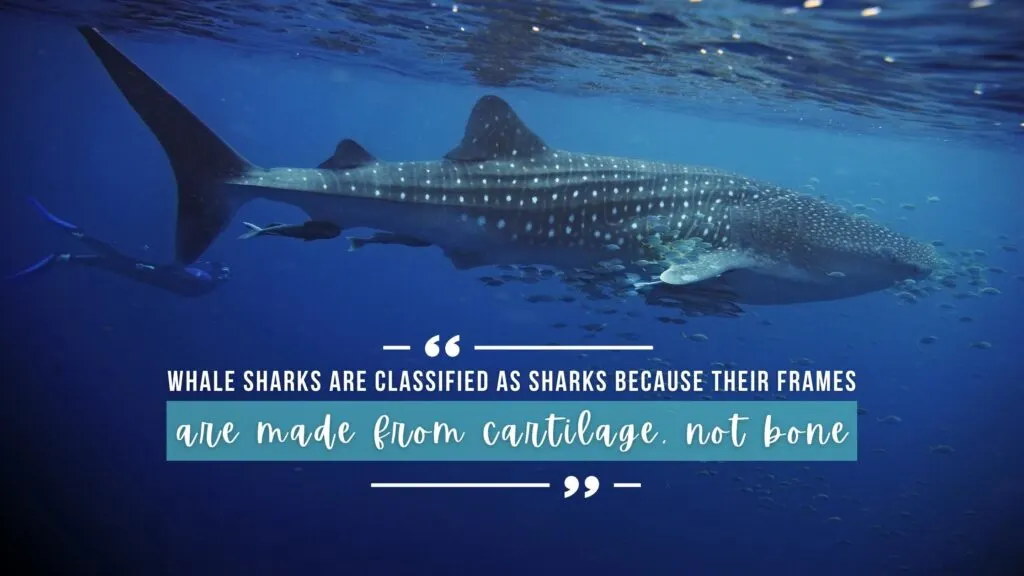
More specifically, whale sharks are a type of carpet shark, belonging to the Orectolobiformes order. Carpet sharks feature distinctive mottled patterns, which are said to be ‘carpet-like’ – although this depends on your taste in carpets!
2. Whale sharks are the biggest fish in the sea
Whale sharks are larger than great white sharks and basking sharks. In fact, they’re larger than any other fish in the sea!
Whale sharks vary in size and are typically anywhere from 5 to 10 metres (18 to 32 feet) in length. However, one of the longest whale sharks ever recorded was a female measuring in at an astounding 18.8 metres (approximately 60 feet)!
3. Whale sharks are filter feeders
Whale sharks are one of just three shark species known to filter feed. The other two are basking sharks and megamouth sharks. But what does this mean?
Rather than biting or chewing their food, whale sharks swallow it whole. But since their food is suspended in water, they need a way to extract, or filter, it from the environment. Whale sharks do this using their gill rakers, which trap food particles while leftover water is expelled. This means that a whale shark can swallow its food without ingesting excessive amounts of water.
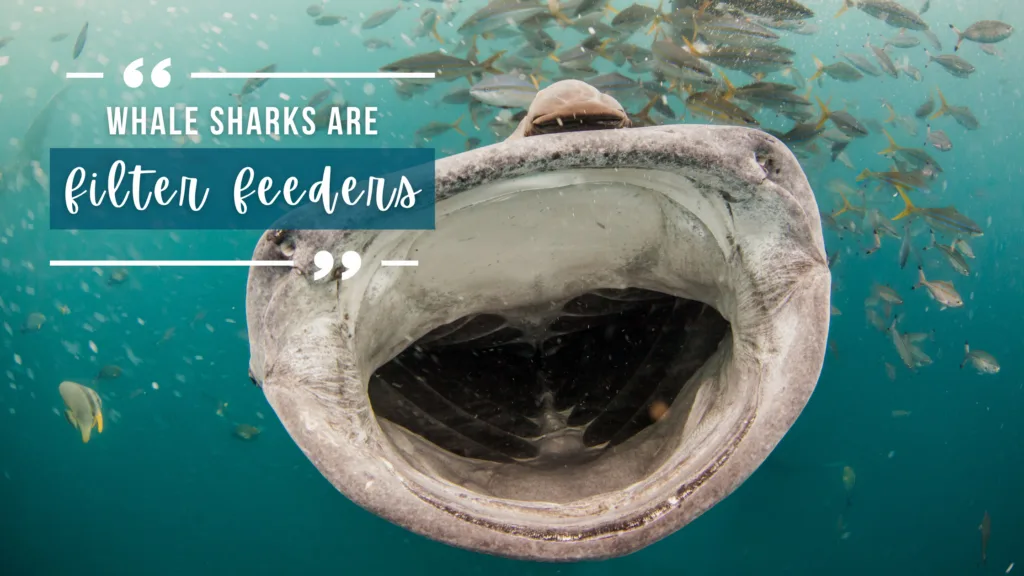
Whale shark’s mouths can stretch to over 1m (3 feet) wide, allowing them to sieve through huge quantities of water. Don’t worry though, humans aren’t on the menu for whale sharks. They prefer to eat plankton, krill, and occasionally small fish.
What’s more, their oesophagus are only a few inches wide – they couldn’t swallow you even if they tried to!
4. Whale sharks are creatures of habit
As you can imagine, it takes a lot of plankton to sustain a mighty whale shark. Consequently, whale sharks spend a lot of time feeding and finding places to feed.
Once a whale shark finds a good feeding site, it’s likely to return. For instance, seasonal mass whale shark feeding has been reported in the waters surrounding Australia, Belize, Maldives, the Gulf of Mexico, the Gulf of California and the Seychelles.
Sightings at these events is almost guaranteed, which is great news for divers hoping to swim with whale sharks. For more whale shark diving destinations, check out our month-by-month guide.
5. Whale sharks are keen (but slow) travellers
In the quest to satisfy their hearty appetites, whale sharks travel thousands of miles in search of food. In fact, they’re known to travel astounding distances of up to 20,000 km (12,400 miles).
Considering how far they travel, it’s not surprising that whale sharks want to conserve their energy when they can. This is why whale sharks like to swim slowly.
Scientists have reported average whale shark speeds of 14km, 15.5km, and 28km per day – pretty slow considering their size. The phrase ‘slow and steady wins the race’ is clearly true when it comes to whale sharks!
6. Whale sharks have eyeball teeth
Just because whale sharks are filter feeders it doesn’t mean they are lacking in teeth. In fact, whale sharks have thousands of them. It’s thought that whale sharks used their teeth to feed in the past. However, as they adapted to filter feeding, their teeth began to shrink.
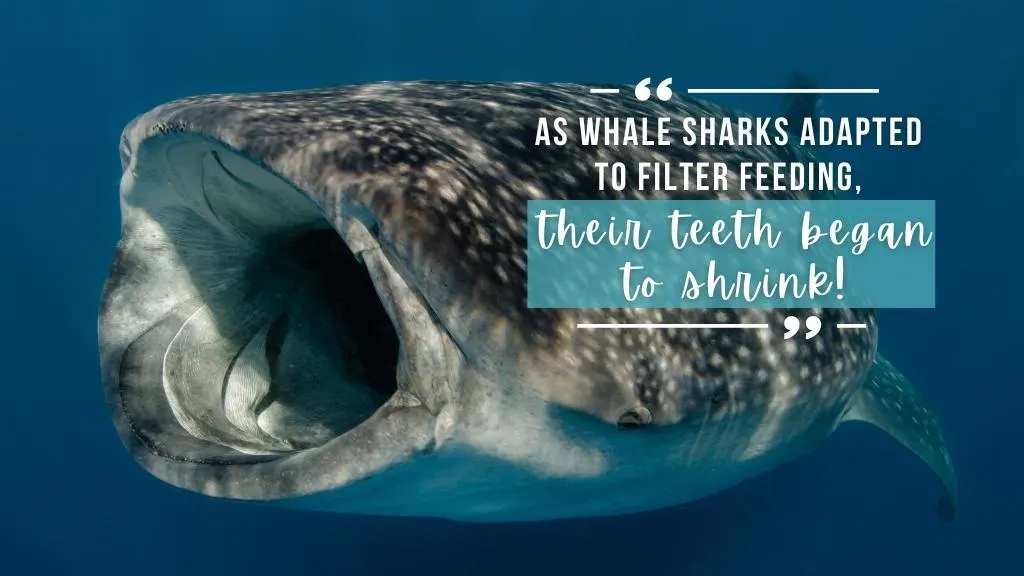
These days, despite not using their teeth to feed, rows of tiny teeth remain just inside the lower lip. But it doesn’t stop there – brace yourselves for one of our strangest facts about whale sharks!
Scientists have recently reported modified teeth structures on the surface of whale shark eyeballs. These miniature structures, known as dermal denticles are most likely present to protect whale sharks’ eyes from abrasions.
7. Whale sharks lay eggs, but you’ll never see them
There is still a lot of mystery surrounding whale shark reproduction and the behaviour of baby whale sharks. However, it’s known that female whale sharks can produce numerous eggs at once. Not all will hatch, though.
Whale sharks are an ovoviviparous species. This means that females produce eggs, but they don’t lay them. Instead, the eggs hatch inside the females, and they give birth to live pups.
Here’s another interesting whale shark fact for you – a female was once found carrying 300 embryos, earning her the nickname Megamamma!
8. Whale sharks have long lifespans
Whale shark growth rates are difficult to measure. However, it’s thought that whale sharks can live to be 130 years old.
Their long lifespans means that male whale sharks don’t reach sexual maturity until they’re roughly 30 years old. Unfortunately, this makes whale shark numbers particularly vulnerable to human activities and other threats.
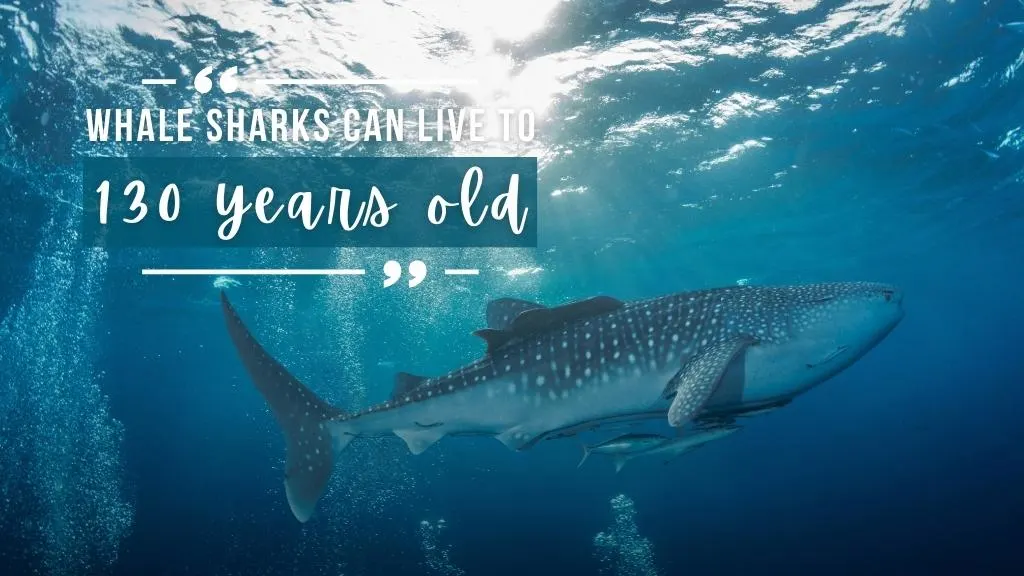
If they’re killed before reaching sexual maturity, they’ll never have the chance to reproduce and boost the whale shark population.
Sadly, this is often the case, and it’s thought that whale shark numbers have dropped 50% in the last 75 years. They’re now listed as endangered on the International Union for Conservation of Nature (IUCN) Red List.
9. No two whale shark patterns are the same
The spotted patterns adorning the backs of whale sharks are so striking that they’ve inspired the designs of everything from mask straps to wetsuits. In fact, we have our very own collection of whale shark inspired products on the Girls that Scuba Store!
But did you know that these patterns can be used to identify individual whale sharks? Just like fingerprints are unique to each human (aside from identical twins), each pattern is unique to each whale shark.
This means that photo identification can be used to monitor whale shark individuals, and we can gather information that can be used to protect them. And guess what? You can join in too!
If you’re lucky enough to bag yourself a photo of a whale shark while snorkelling or diving, you can submit it to the Shark Guardian Whale Shark Project.
Your image will either be matched to a whale shark that’s already in the database, or a brand new record will be created for future monitoring. Plus, their website is a great place to find more facts about whale sharks as well a guide on how to dive with them responsibly.

About the Author
Rose has spent the last few years living in Europe, the Seychelles and Kenya, working as a dive instructor, writer and conservationist. She’s back in the UK at the moment and is slowly acclimatising to cooler waters!

